
How long you can go without heading to the store “to cook breakfast, lunch or dinner“, will determine how well you are prepared in case of any emergency.
To determine just how prepared you are to feed your family, I encourage you to examine your grocery shopping tendencies, right here, right now.
How many times a week do you go out grocery shopping? Once, twice a week at a minimum? Can you manage to go out shopping for food once every two weeks? Once a month?
The longer you can go without leaving home and purchasing food from the store, the better off you are.
It does take work, careful preparation, perhaps even rationing to make it through hard times, but once you have provided enough for yourself, your continued food prepping efforts will be greatly rewarded when friends and neighbors are coming to you for support. A little goodwill goes a long way in the form of fresh veggies, homemade mozzarella and apricot jam.
It is recommended by many a prepper to have a stored food supply that will cover each member of your household for a minimum of 2 weeks. This should include pets and farm animals too!
If you are unable to leave your home for whatever reason, and if delivery is not an option, you must be prepared at all times!
With 59% of U.S. adults living paycheck to paycheck, stocking your pantry and cabinets for future survival may seem like a daunting task.
I’d like to quickly share how we eat and store enough food at home so that we could potentially go for more than a month without ever leaving our property.
Storing food – the old-fashioned way
Let me preface this by stating that climate has a lot to do with what you eat, and what can be stored easily. That being said, we strive to consume what grows, and is raised, locally.
We live in modern times with extremely fast internet, yet we do not have running water in our house, there is a tap outside with water running fresh and unfiltered from the mountain – that’s another story.
It just so happens, by choice and circumstance, that we do not have a refrigerator or freezer for food storage either.
Those of you who do have those two additional options of storing food, congratulations! They can aid in helping you store food for 6 months or more – provided you have a backup generator for times when the power goes out.
The question we get asked most often is “What do you eat?!”
With self-reliant skills that we have learned throughout more than a decade of homesteading, we have refined our diet down to the very foraged herbs that are beneficial to us. When they are in season, we harvest from the hills and valleys around us.
We maintain a no-dig garden every year, that provides us with fresh veggies in season, with a small surplus for canning. The bulk of our canned goods comes from fruit trees of our own, or with the growing efforts of others from the local farmers market.
We ferment veggies and salsa, we store apples and squashes in the cellar, we eat regionally raised and cured mangalica, and we gradually stock up, not hoard, the rest.
If we can manage like our great-great-grandparents, we know that it is entirely possible for you to do this with modern conveniences too!
Forget the junk food – eat healthy!
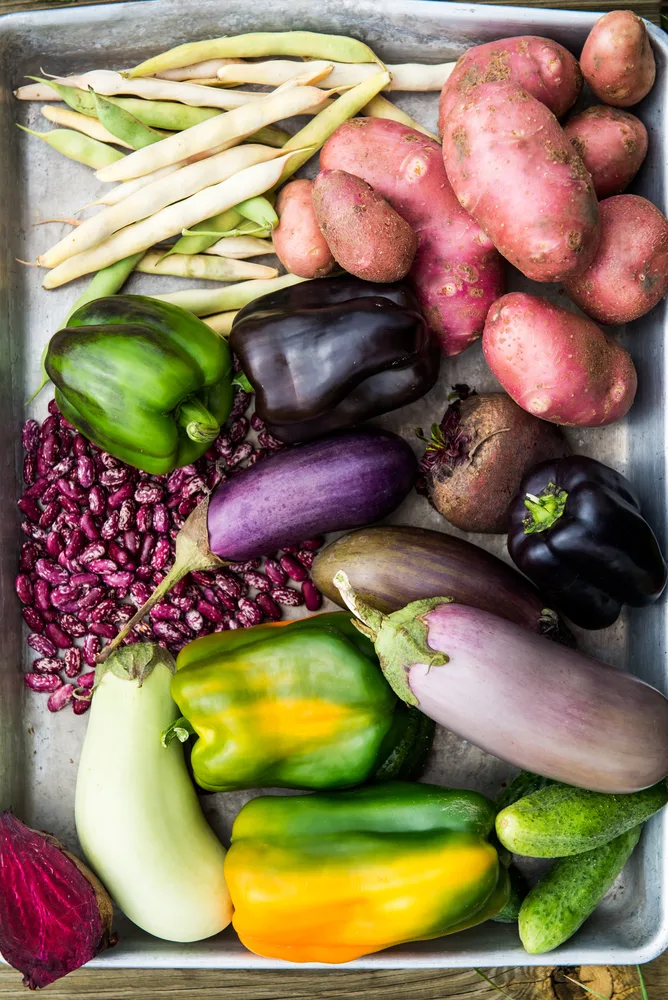
Think back to what your far ancestors ate.
They ate real food, not products with catchy names, promoted by even catchier advertisements. Real food, grown by hands in the dirt, not sprayed with a slew of chemicals and harvested by machines.
Simple food is harder and harder to come by these days, but it is not impossible to find. It helps if you have the skills to grow it, or raise it (as in having backyard chickens for eggs and meat), but that isn’t the most important skill to have in order to stock your pantry.
If you truly want to enjoy meals in your own home, rather than dining out in a restaurant, you are going to have to learn how to cook, bake, create and recreate tasty dishes using the most basic ingredients. Always making sure that what you choose to store is supporting your health, not compromising it in any way.
Keep in mind that it is ingredients, not products, that you need to stock up on, and the rest will fall easily into place.
Learn how to cook
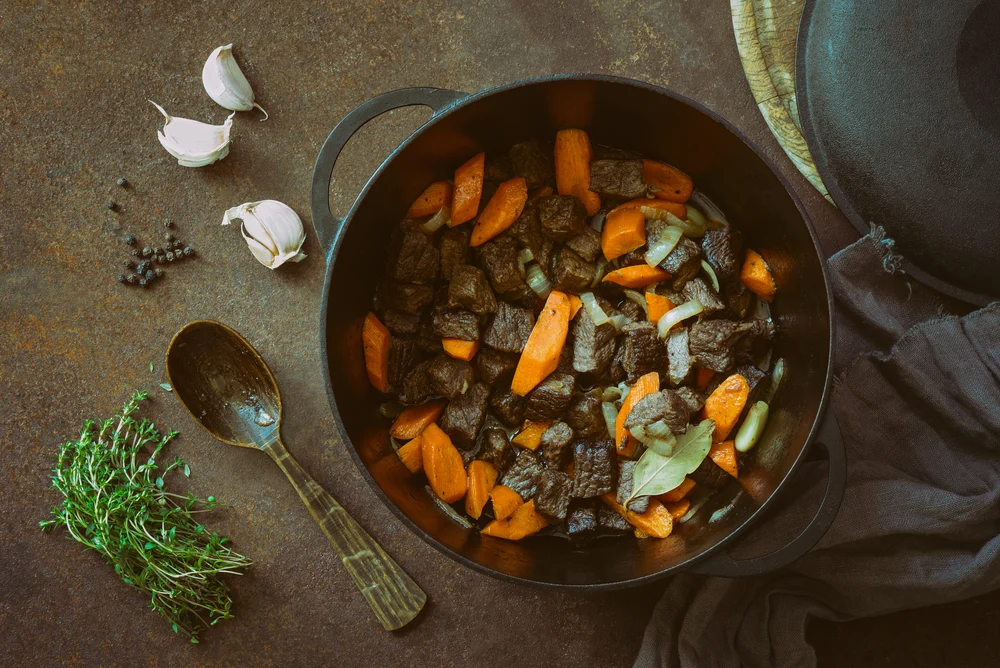
While you are in the comfort of your own home, if you haven’t gathered the skills from your parents, grandparents and friends, learning how to cook may just be the thing that saves your life and your sanity.
Gardening helps too.
If you are at the beginning, start by learning how to cook eggs. Boil them, poach them, make a scramble with fresh chives and bacon.
Get a good cookbook, watch a new YouTube video everyday and gain experience by trying something new.
As you gain confidence, you will soon be making the most delicious, crackly pork belly in town!
See, it takes understanding how ingredients work together, and being creative with what you have on hand, to entertain people around the table time and time again.
So, what does a well-stocked pantry look like?
One that allows you to spend more meaningful time at home, with less time wasted mindlessly shopping? Perhaps not even finding enough of the things you need?
A well-stocked pantry involves a revolving stock of food, taking into consideration the seasons and nature’s bounty. You need to manage the freshness of ingredients, using up what is most perishable first, not what you have the greatest cravings for. Self-restraint is crucial.
It also takes some organizational skills to build up your stores gradually, so as not to take essential food away from others who are less prepared. Hoarding in a time of crisis only serves to take away from those less endowed with money, transportation or good health.
Let’s get started with growing your emergency food supply!
Canning
One of the greatest homesteading skills we have acquired is that of canning and preserving food.
In a recent summer we made more than 250 jars of jams, chutneys, pickles and relishes that are still being used to feed ourselves, while others are handed out as gifts. The following year we scaled that number down to 150, simply because we had too much!
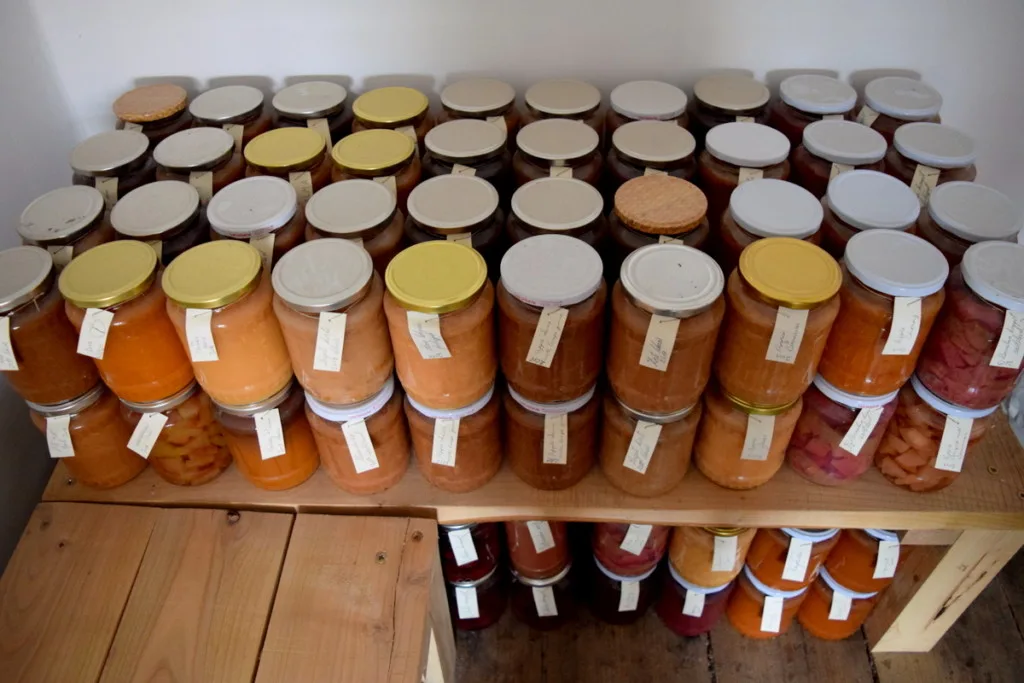
Once you start canning, it is hard to stop. But you also need to know your limits. We’ll talk about food waste later in the article, which is extremely important if you are relying heavily on your refrigerator.
How many jars of preserved food are right for your household?
It all depends on the size of the jars, what is in them, how often you consume them, etc. Bottom line, it depends. If you have frozen goods as well, you’ll need less. Without a cellar, you’ll need more.
If you don’t can yourself, you can stock up on similar items from the store. Just be sure to watch out for sugar content, artificial colors and preservatives, as well as other allergens that you don’t want/can’t handle in your household.
Dehydrating
Whether you are dehydrating herbs, organic fruit peels, sliced fruits (like apple rings) and veggies, you’ll find that this method of food preservation is certainly a tasty one!
You can add dried fruit to homemade muffins and cakes – sun-dried tomatoes are a personal favorite. Toss in a handful of dried carrot tops into your stew, or add a small handful of wild foraged and dehydrated mushrooms. It is an amazing way to make one good hunting season turn into hundreds of meals.

As with anything you are to store in your pantry/cupboards, make sure that it is likeable by most, if not all, members of your household. However, when you cannot leave your home for a month, it does not pay to be picky.
Keep an open mind about what nutritious food is, and be adventurous with eating something new to you!
Fermentation
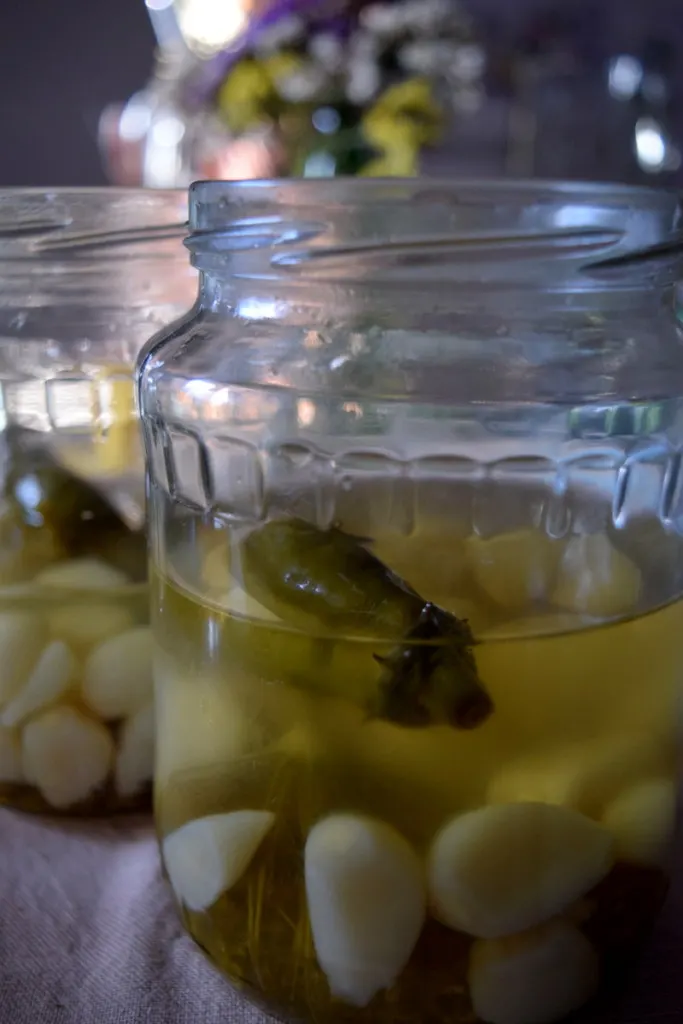
Sauerkraut is perhaps the most notable fermented item you can make at home or buy from the store. But there is a whole world of fermenting out there!
Ferments can be made as you need them, and they are a great way to use up fresh garden produce that is difficult to can or dehydrate. We make ferments on a rotational basis, making sure to start a new batch of lacto-fermented garlic to boost our immune systems quite often.
This book will change the way you think about fermentation forever:
Fermented Vegetables: Creative Recipes for Fermenting 64 Vegetables & Herbs in Krauts, Kimchis, Brined Pickles, Chutneys, Relishes & Pastes by Kirsten and Christopher Shockey
Sprouting
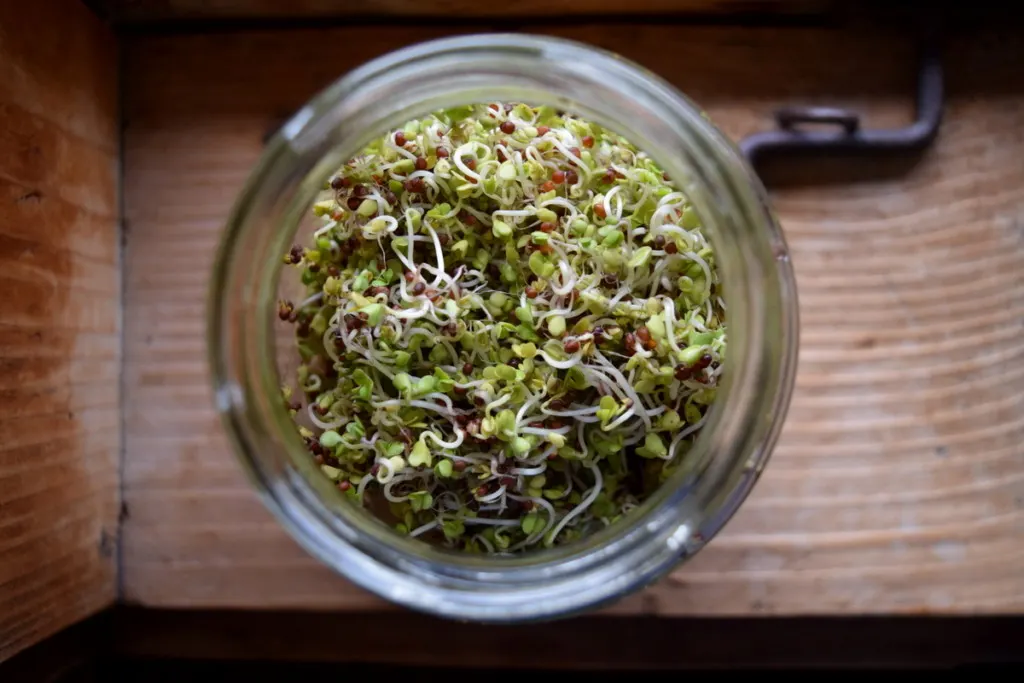
Kids love sprouted seeds, chickens adore sprouted seeds, and chances are pretty good that you are going to develop a fondness for them too.
Sprouts are insanely easy to grow, and can be ready to eat in a matter of 3-5 days. All it takes is a jar (of any size) and organic sprouting seeds. These can come straight from your garden, or from an online store.
A 1 lb. bag of broccoli seeds will last you a long time, providing you with wholesome vitamins and minerals in addition to other foods you are consuming.
Eggs
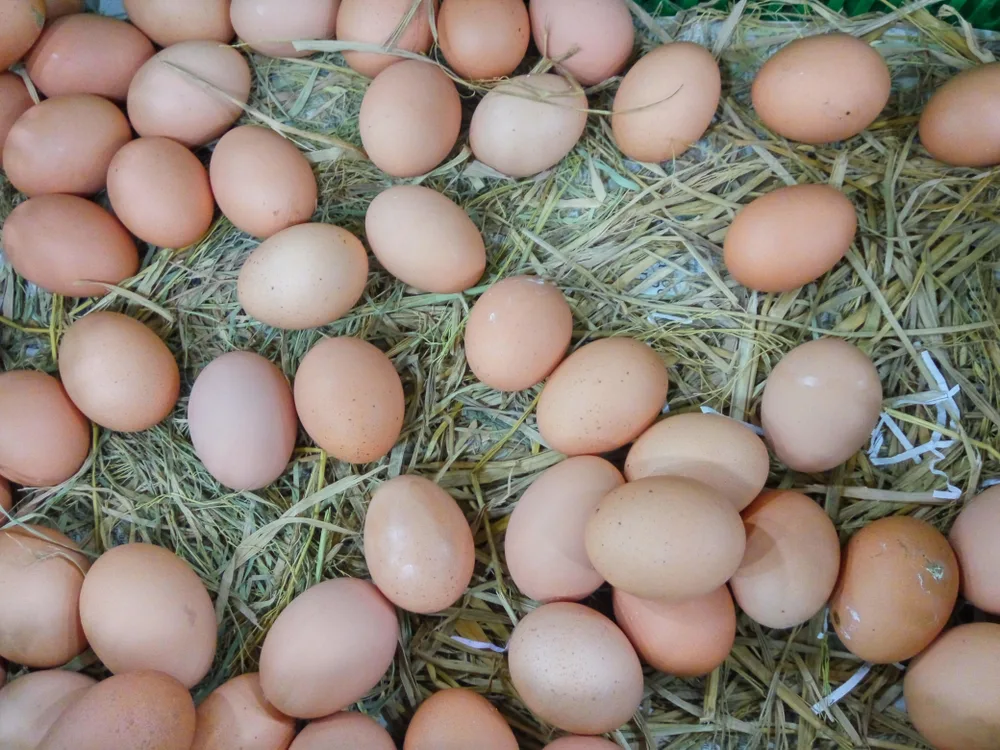
Eggs are an essential food to store and keep on hand.
Not only are eggs a low-cost source of protein, they are rich in selenium, vitamin D, B6, B12, iron, copper and zinc to help keep you healthy.
Farm fresh and free-range is best, but all eggs will provide with long-lasting energy, don’t forget to eat your eggshells too!
As with every food, remember to rotate your stock.
We know you are going to ask:
- Do You Have to Refrigerate Eggs?
- Do Farm Fresh Eggs Need to be Refrigerated (How to Store Fresh Eggs)
Cooking fats and oils
If you wish to cook tasty meals at home, you are going to need a source of fat and/or cooking oils.
We prefer to render lard and tallow on an infrequent basis. Both are easy to store without a refrigerator. Plus those leftover pork rinds are delicious calories, extremely tasty when sprinkled with salt, dipped in mustard or freshly grated horseradish from the garden.
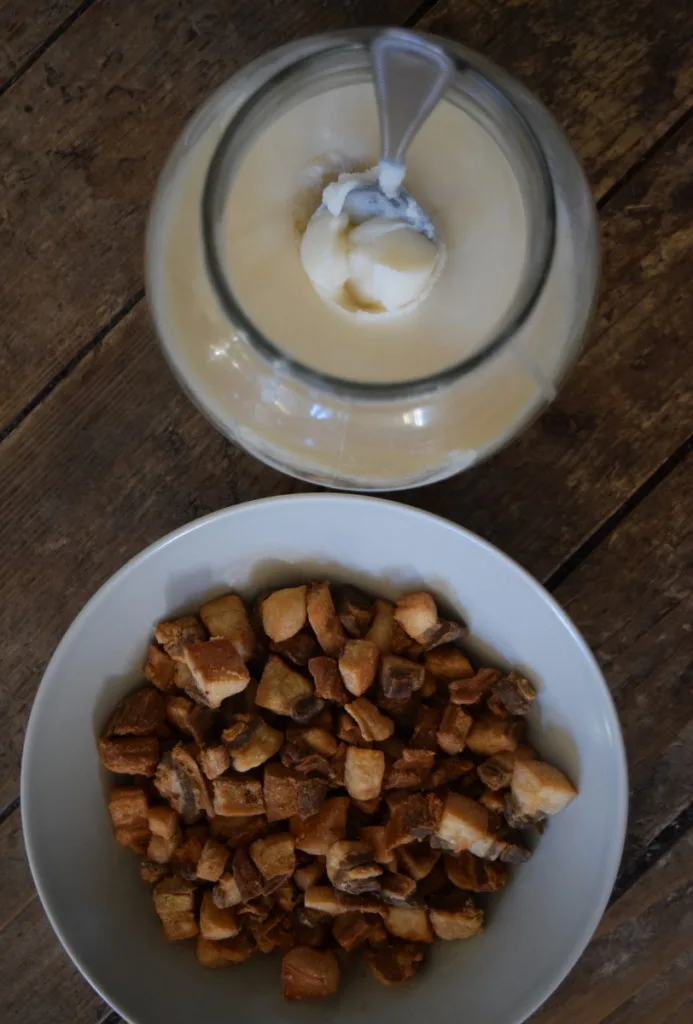
Plant-based oils you may consider storing in your home are hemp, sunflower, safflower, corn or avocado oil. Coconut oil and olive oil are quality oils as well.
Keep on hand what suits your diet best, making sure that you have at least a month’s supply.
How long can you properly store cooking oil?
This article will give you all the answers you seek:
4 Simple but Clever Ways to Keep Cooking Oil Fresh Longer
Smoked meats
Bacon, prosciutto and sausages.
They all belong in your pantry during the colder months, less so in the heat of summer, unless you have the perfect conditions for storing them (cool, well-ventilated, dry space). But then you may have more eggs from your chickens, milk from your goat or cow (share), and veggies from your garden. Eating seasonally certainly has it’s trade-offs!
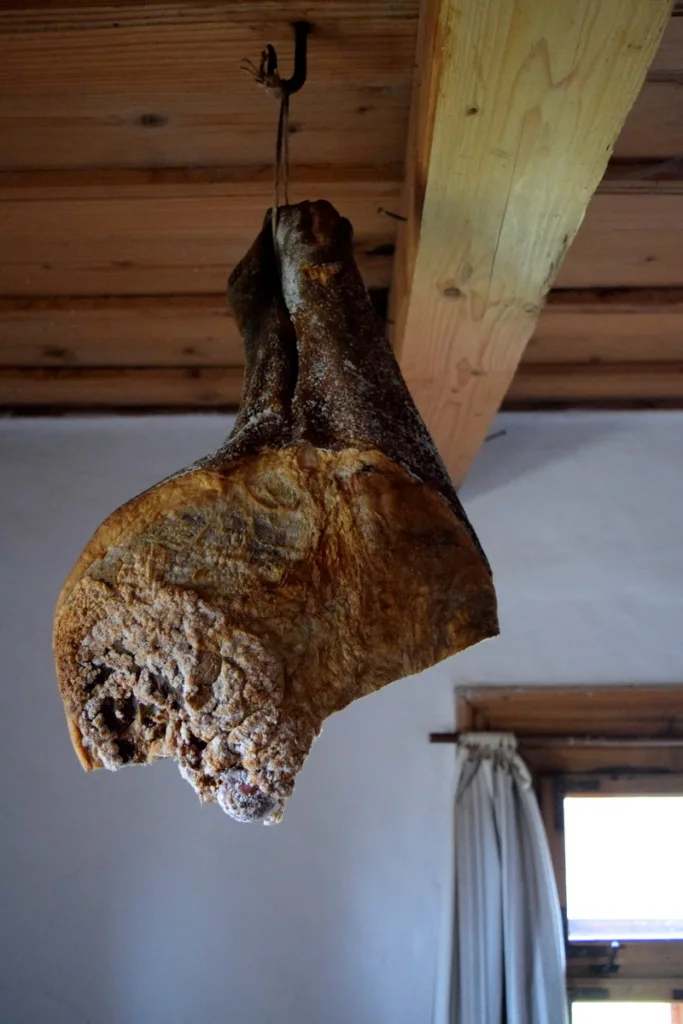
Frozen meat
Of course, if you have a deep freezer, it is easy to stock up on your favorite cuts of meat throughout the year, thawing and cooking them as necessary.
Utilizing the freezer also helps many people in meal planning. It allows you to cook/bake in larger batches and freeze individual or family portions that you can take out quickly and reheat in times of need.
Aged cheeses
Fresh cheeses are easy to make, but what if milk isn’t available?
Or what if the store shelves are empty, everyone thinking that cheese and crackers make a great quick snack?
Cheese, even when refrigerated, has a quite short shelf live, depending on how it is stored, and how quickly you gobble it up.
Aged, harder cheeses, however, last a lot longer: 4-6 months in the fridge if you store them correctly and at least a month or two in a well-ventilated pantry or cheese cave.

Dairy and non-dairy alternatives
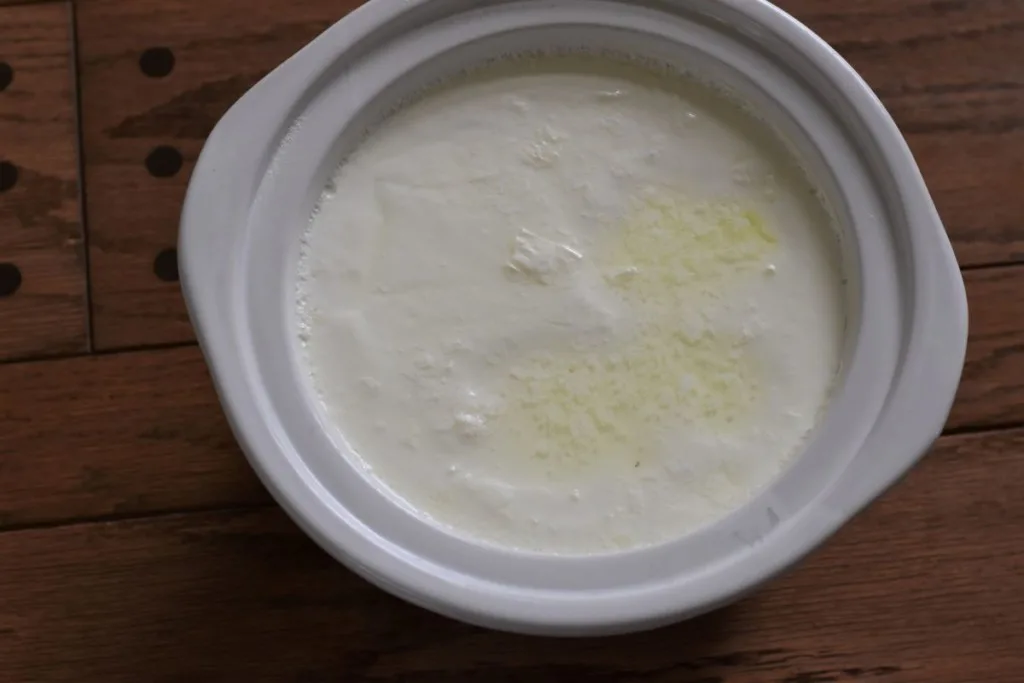
Yogurt, butter, sour cream are all objects of desire that can be made easily at home.
If you enjoy dairy and wish to have a secure, mostly steady supply, it is advisable to start with raising goats, then work your way up to a cow.
Both have their challenges and require a bit of land. However, if you are in a lucky situation living closer to the countryside, you may be able to get milk from local farmers and make your own items:
- Easy Homemade Yogurt And The Secret Step To Make It Extra Creamy
- How To Make Butter & Buttermilk From Cream In 20 Minutes
- DIY Cultured Buttermilk In Seconds + 25 Delicious Ways to Use It
If you are on a dairy-free diet, you may want to stock up on alternatives for all your baking needs. Coconut, oat or almond milk for starters.
You could also buy nuts in bulk and learn to make your own nut milks. One significant advantage of this is that you can easily store the nuts and make just as much milk as you need at once.
Storing fruits and vegetables in the root cellar
You don’t need a garden to learn how to cure and store winter squash or an orchard to learn how to store apples, though it doesn’t hurt to know how, just in case.
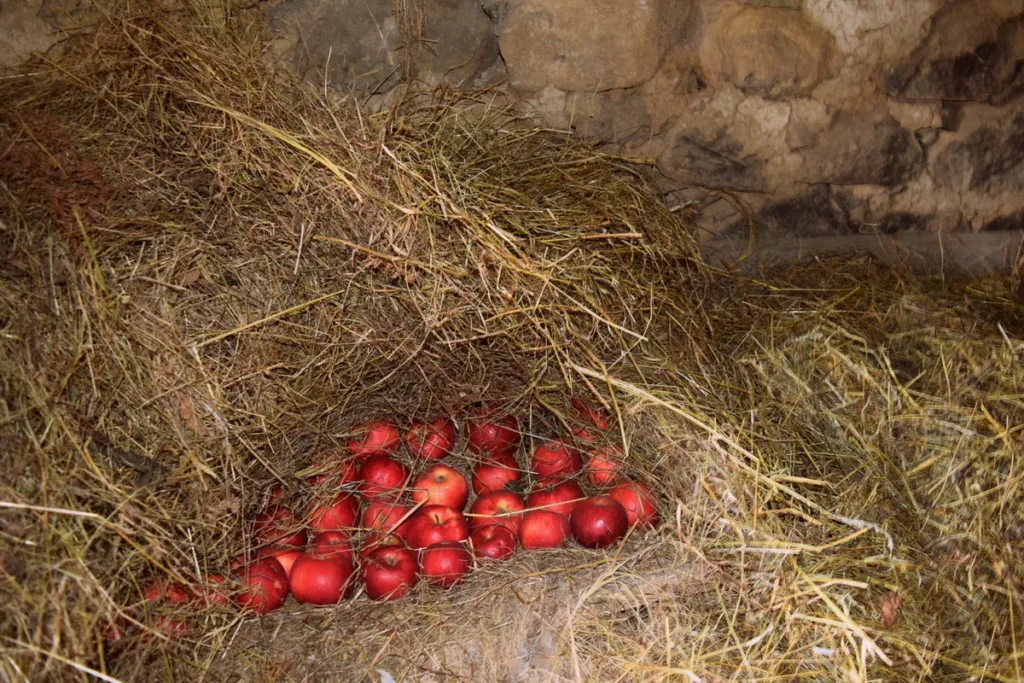
Sometimes your garden will produce a bumper crop, other seasons will leave you with next to nothing. But one thing is for certain, there will be a market or supermarket nearby to cover your loss. Only the storage will be up to you.
If you have a large garden and/or live on a homestead, one thing to invest in is a place to store your vegetables over winter.
A typical crop that you may want to keep as an emergency supply is potatoes. Storing them is both easy and straightforward as you’ll find out here:
5 Ways To Store Potatoes So They Last For Months
If you don’t have a root cellar, opt for another method of preservation, or choose another crop and learn to re-grow vegetables from scraps to prolong the life of veggies in your house.
Foraging

Perhaps now, more than ever, people are re-beginning to wonder what is edible in their backyards and beyond.
My husband and I once hosted a foraging workshop and were able to find 34 wild plants and herbs from our garden in a single outing. We put them all in a salad and nourished ourselves, and our surprised guests with an amazing work of art.
Foraged crops have long kept humans in good health, particularly in times when cultivated crops have failed.
Some of the plants we forage for are:
- nettles
- dandelions
- raspberry stem
- elderberry (flowers and berries)
- plantain
- shepherd’s purse
- St. John’s wort
- goosefoot
- hawthorn berries
- ramsons (once a year in spring)
Just like with learning how to grow and harvest from your own garden, gaining knowledge and confidence in foraging will take you far. For many, wild plants are both food and medicine.
Dried herbs
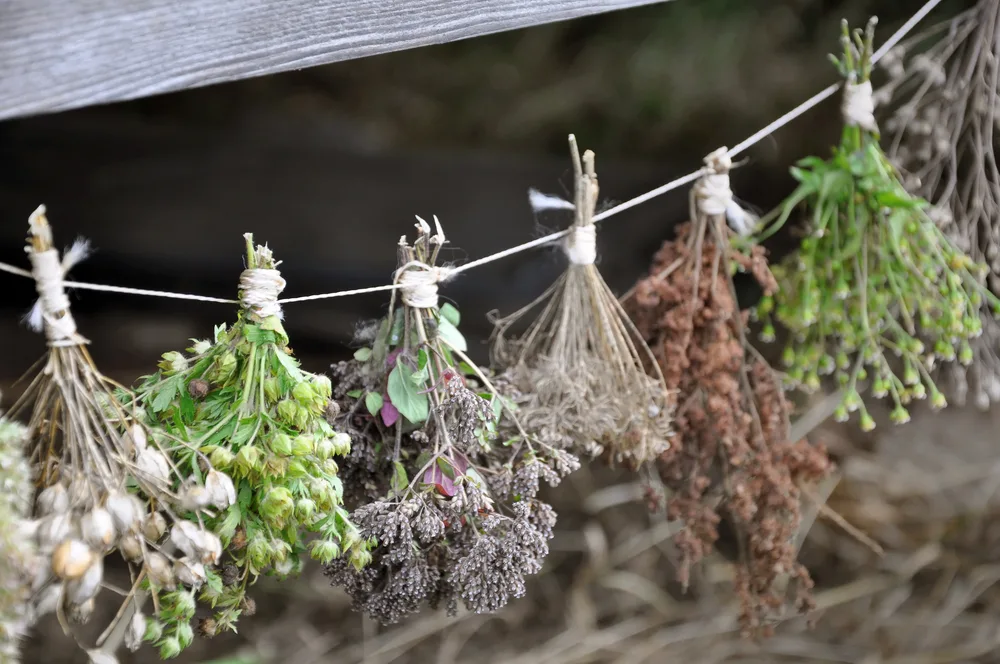
Harvesting is one thing, preserving is another. Whether you are drying foraged plants, or those from your garden, the process of drying herbs is the same. All it takes, is some string and a place to hang them, indoors or out, but definitely out of the sun.
You can then use your own rosemary, mint, sage, basil and the like to spice up any meal, going from bland to grand with a pinch of homemade dried herbs.
Here’s our guide to drying herbs at home.
Staples
Food that you cannot grow yourself, yet you use frequently is considered a staple. You should always have more then enough of what you think you need.
With time, your estimations will get better. If you end up with too much, you will then have excess to share or sell.
Salt
Cooking without salt is like cooking without love. Most everything tastes better with just a pinch, so long as you don’t overdo it.
8-10 pounds of salt per person per year is a good standard to store salt by.
This article explains in more detail: Salt: Why It Is Essential and How to Store It Right
Flour, grains and pulses
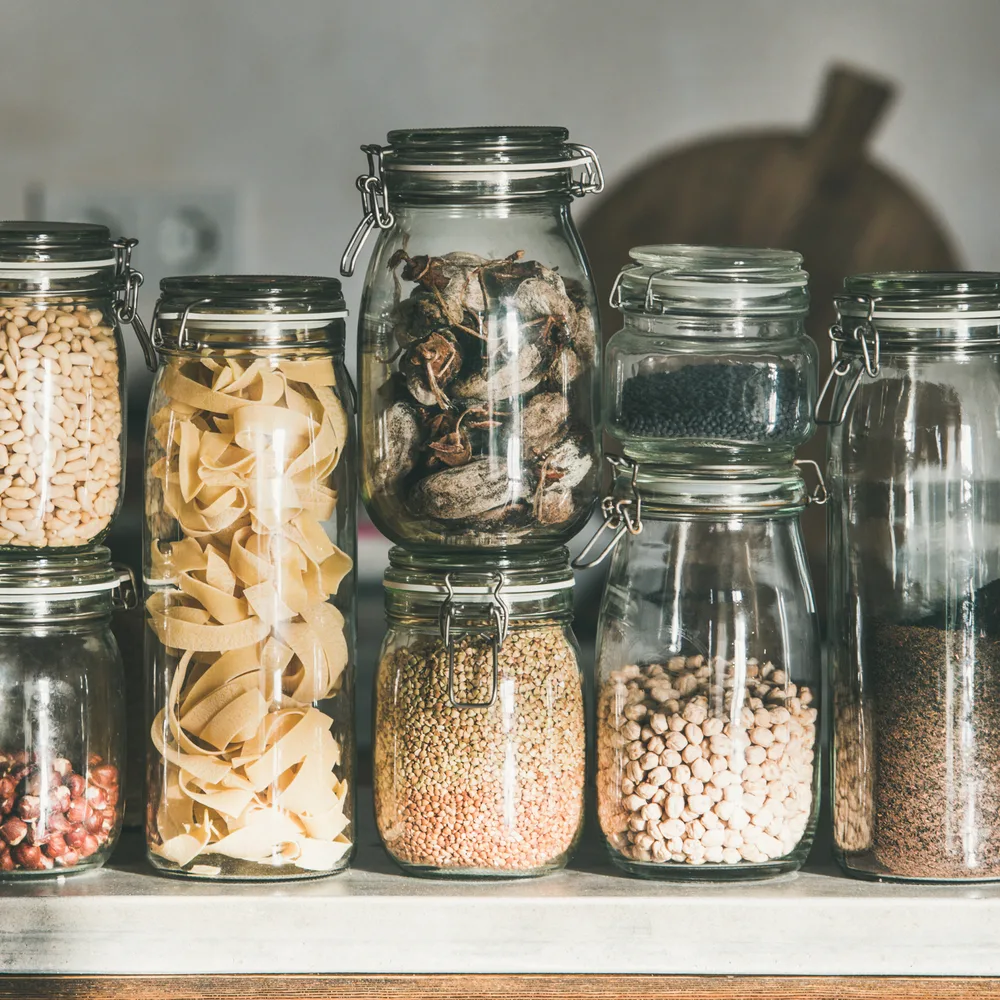
How much flour you need for a month, depends a great deal on what you eat, as well as how many people you are cooking for.
It doesn’t matter if you are consuming gluten-free flour or ancient grains, all flour has a shelf life that must be considered. This if often regarded as 6-8 months, longer if refrigerated or frozen.
Again, it is best to use up everything that you have in good time, letting nothing go to waste.
Same applies to pasta, pulses, dried beans and other staples.
If the thought of keeping a well-stocked pantry is growing on you, here is more wonderful information on basic long-term food storage.
Honey and other sweeteners
While there is a great debate about how much sugar is good/bad for you, it is absolutely clear that sugar intake is growing. And it is linked with an increasing rate of diabetes, among other conditions.
With natural health in mind, we limit our sugar intake, mostly relying on honey and fruit to satisfy our craving for something sweet.
If you are stuck at home for two weeks or more, chances are pretty good that you would like to bake a cake, or at least to make pancakes. Maple syrup is good for that. Store just enough sweeteners so that you are aren’t tempted to eat it everyday – just ’cause it is there.
Coffee and tea
You’ll always want to be sure to drink plenty of water, but nothing warms your heart and spirit like a steaming mug of coffee or tea!
Evaluate your general rate of consumption and stock up from there, making sure to include some hot beverage options for children too.
Nuts
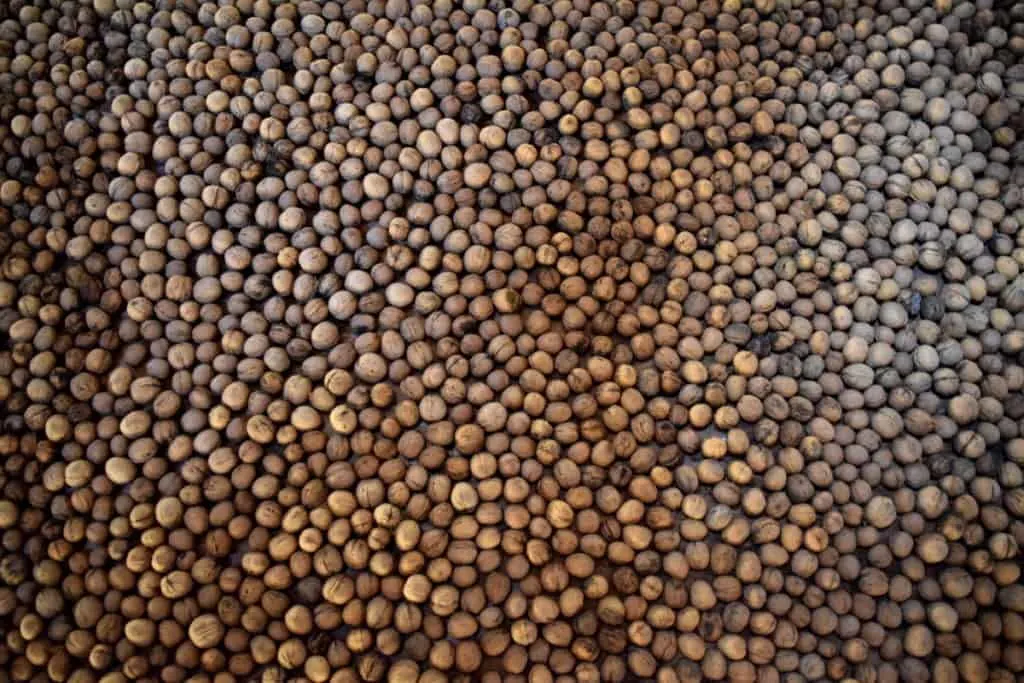
Depending on where you live, if you have the chance to harvest walnuts, pecans, hazelnuts, almonds or the like, know that they are also easy to store – when they are kept in their shells.
A couple of years ago we harvested a bumper crop of walnuts and are still eating them to this day! What an excellent source of fat, protein and fiber.
Storing water
Having access to clean drinking water is crucial to survival. We need it for drinking, cooking, even for keeping our hands clean!
The big question is, do you have enough water set aside, in the off chance that the taps stop flowing? Can you rely on a well, or neighbors to help you out in a time of need?
Storing 1 gallon of water per person per day is advisable for emergency situations.
Here’s more information to help you get started: How to Store Water for Drinking or Cooking
Tinctures and other natural remedies
If life has you stuck at home and unable to go either to the grocery store or pharmacy, you will want to have some other tricks up your sleeve.
Related reading: 7 Essential Medicinal Plants to Grow and How To Use Them
Natural remedies have been passed down throughout the centuries, and it seems that humanity still has a lot to learn.
Yet, some natural medicines are tried and true.
Here are some additional resources to help you stock your pantry with not only food, but natural remedies too:
Non-essentials and wants
Salty nuts, peanut butter, chips, cookies, crackers, popcorn, ice cream, alcohol – you name it, there is an expensive product developed to downright tempt your taste buds. If only you would buy it!
Food and drink that tastes good, but leaves you feeling not so great, are not the best things to stock up on.
It is okay to have a few of those comfort foods to see you through stressful times, just don’t make them the mainstay of your diet. Instead, why not teach yourself how to make different versions of those things you like from the store. Chances are wonderful that they will turn out even better – because they are made by you!
Waste not, want not
Once you have taken the initiative to stock up on healthy, wholesome food to see you through 2 weeks to a month, or more without leaving the house, reducing food waste becomes a concern.
It has been stated that “Americans waste 150,000 tons of food each day – equal to a pound per person“.
Much of this food waste comes from fruits and vegetables that go bad long before you have the inclination to eat them. This is followed by dairy and meat.
What doesn’t typically get thrown away? Snacks of the salty and sweet kind, your favorites from the store.
How to curb food waste at home?
Reducing food waste is important if you are on a budget, and if you don’t know when the next trip to the store will be.
Here are 7 ways to reduce food waste:
- Eat what is most perishable first, even if it isn’t your first choice.
- Learn to ferment, can, dehydrate and freeze fruits and vegetables.
- Be ready to eat leftovers – and learn to like them too!
- Compost as much food waste as possible.
- Store food properly, so it doesn’t go bad to begin with.
- Treat expiration dates as guidelines, and use all your senses to determine whether food is still good for eating.
- Keep track of foods you tend to throw away.
If you have food waste, it may be because you are buying too much at once, you don’t know how to preserve it properly, or it is simply not a family favorite.
Examine your food waste weaknesses and turn them into strengths with time and practice.
Get creative in the kitchen
If you are to survive for weeks without shopping for food, or heading out for a doughnut at a nearby cafe, you are going to have to get creative in the kitchen.
Make it a routine to try something new.
Spice up your pizza night with flavors from the garden.
Grow nasturtiums and nibble on other edible flowers.
Make a jar of quick spiced carrot refrigerator pickles.
Put on a pot of delicious chili or stew, and add an apple or two. It tastes fantastic!
Above all, just remember to stock up slowly and mindfully on all the ingredients you need to cook amazing food at home. With some simple planning and organization, you will be prepared for weeks to come.
Good luck and happy pantry prepping!

Get the famous Rural Sprout newsletter delivered to your inbox.
Including Sunday ramblings from our editor, Tracey, as well as “What’s Up Wednesday” our roundup of what’s in season and new article updates and alerts.

